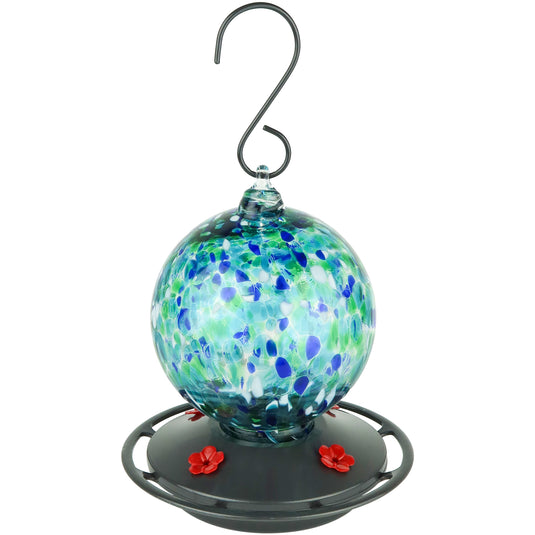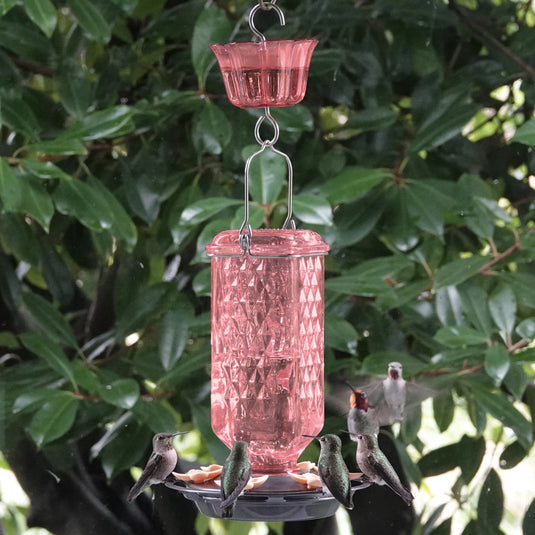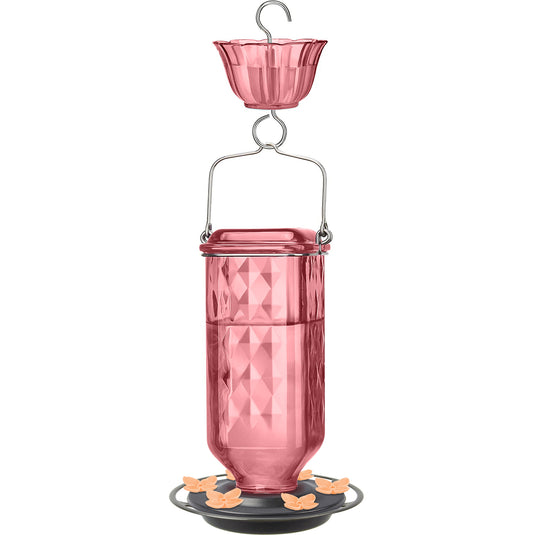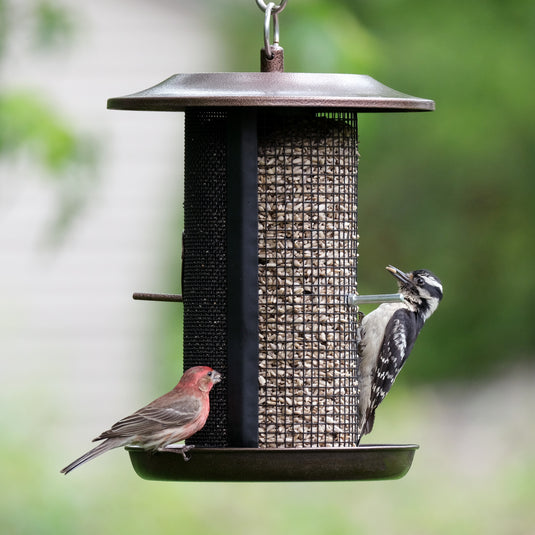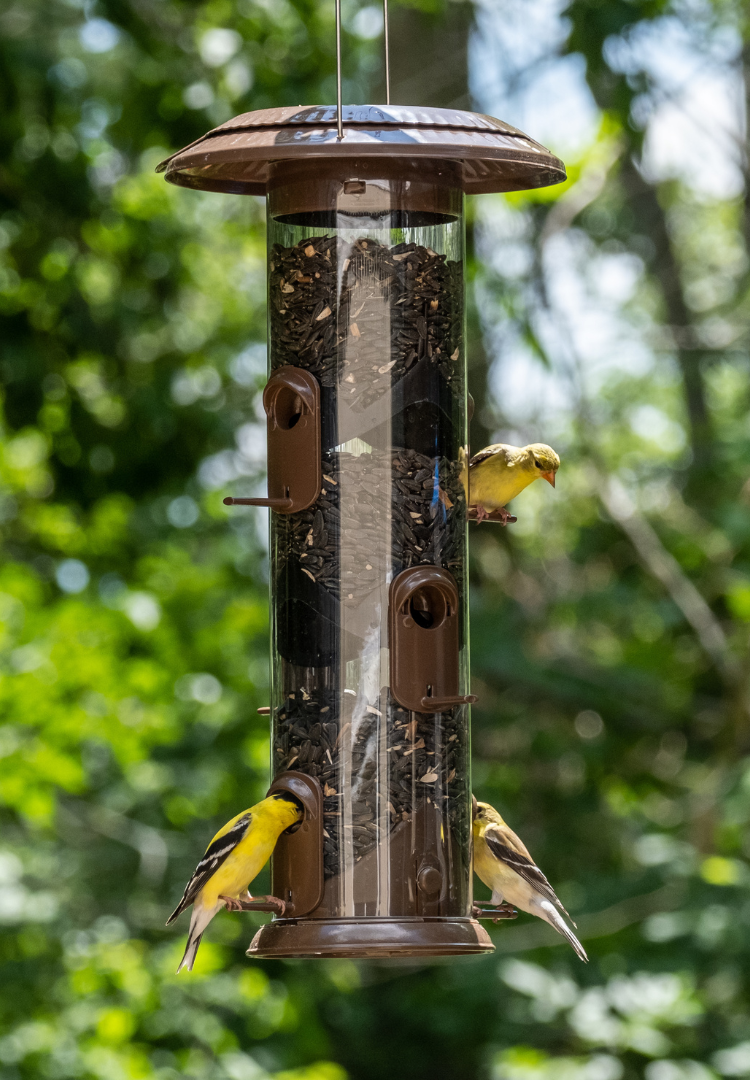Identifying Anna's Hummingbirds:
At just under 4 inches in length, Anna's hummingbirds are small in comparison to other birds but in the hummingbird realm they are medium-sized and somewhat stocky. Mostly pale gray on the underside with an iridescent emerald green back, tail, and wings (sometimes also extended around the abdomen), the Anna's hummingbird is distinguishable from the Rufous hummingbird because it lacks any orange or rust-colored markings. While sometimes appearing a dull brown without direct sunlight, the male's face and throat are covered with brilliantly colored fuchsia feathers.


Left: male. Right: females.
Where Anna's Hummingbirds Live:
These dazzling jewels can be found year-round along the western coast of the US and into Arizona. Occasionally Anna's hummingbirds can be seen in parts of New Mexico in winter months and in rare occasions they can be sighted north along the very coastal western strip of Canada.
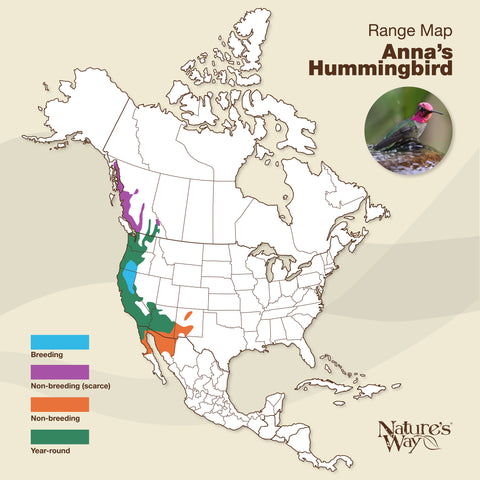
What Hummingbirds Eat:
Anna's hummingbirds feed on nectar from tubular flowers, insects which they catch during flight or may even pull from spider webs, and sometimes tree sap. Hummingbirds will also readily consume artificial nectar from hummingbird feeders. Nectar can be made using a ratio of 1 cup white sugar to 4 cups water. The use of dye or food coloring in artificial nectar is not necessary for attracting hummingbirds to a feeder and is not recommended due to the sensitive nature of these tiny birds.
How to Attract Anna's Hummingbirds to Your Feeder:
Placing feeders near flower beds or planters may help attract more
hummingbirds to your feeder. For the best chance of hummingbirds discovering your feeder, it is recommended to have it up and ready before they return from their winter migration. Be sure to research the migratory pattern of hummingbirds in your area to make sure you haven’t put your feeder out too late, since this can cause them to overlook it later in the season. Feeders with built in perches can help these tiny birds conserve energy and feel more comfortable feeding, prolonging feeding times and increasing hummingbird viewing.

Product shown: Vintage Blossom Decorative Glass Hummingbird Feeder (Model# DGHF3)
Nesting:
Nests are typically built on a horizontal branch of a tree or shrub between 6-20 feet off the ground close to a nectar source. Roughly the size of a large thimble (1 inch deep and 1.5 inches wide), the female constructs the nest over the course of roughly a week using plant down held together with strands of spider silk and camouflages the exterior of the nest with lichen or moss.
A typical clutch contains 2 eggs that are roughly 0.3 inches wide and 0.5 inches in length. The tiny eggs are white and weigh less than half a gram. Eggs hatch in about 16 days and will fledge the nest after an additional 20 days. Anna's hummingbirds will typically have 2-3 broods per year.

Related Articles:







